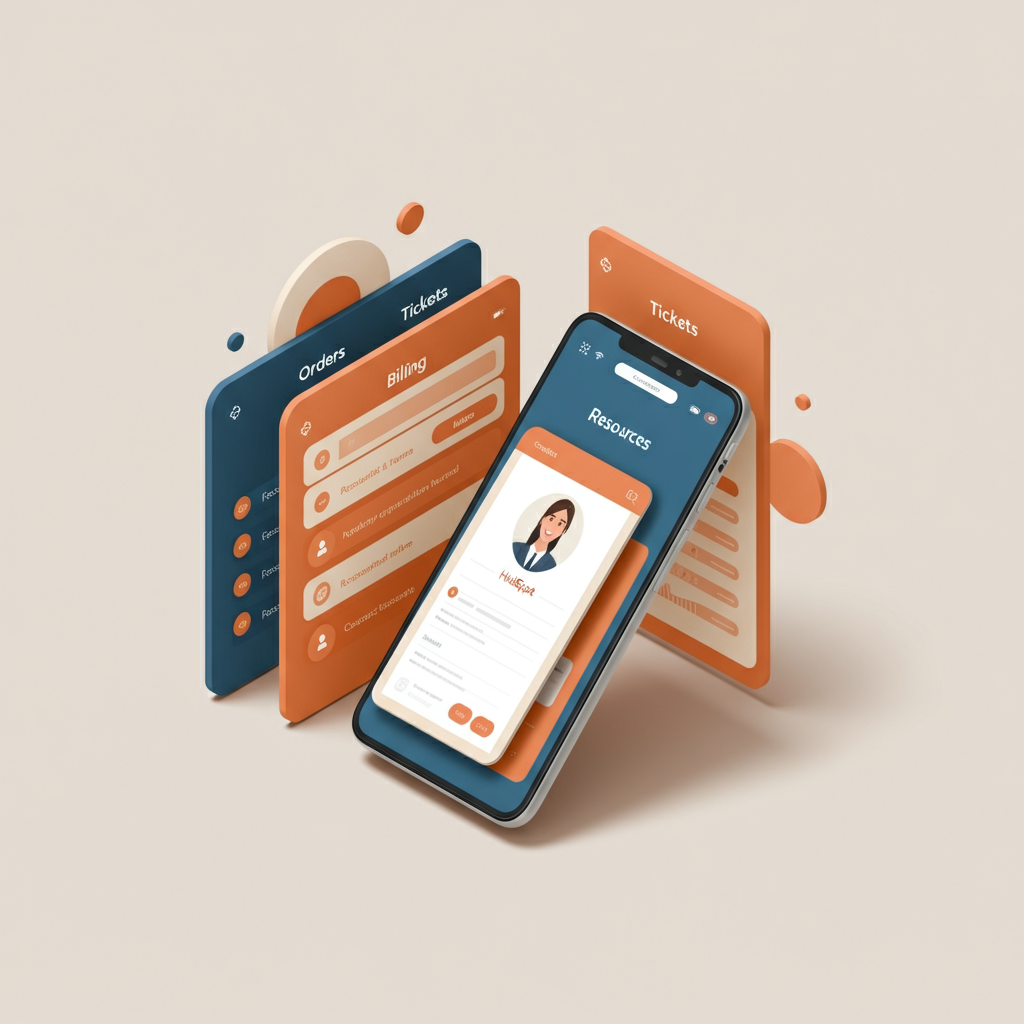Share
There’s a difference between a “portal that launches” and a “portal that works.” A fully functional and scalable CRM customer portal can transform your business operations, streamline communication, and enhance user experience. Yet, not all HubSpot partners have the expertise to deliver on this vision.
If you want a CRM-powered experience that supports your customers at every stage, you need a partner who understands more than just CMS templates. You need someone who thinks like a product strategist.
This guide breaks down what most partners get wrong, what the best ones do differently, and how to choose a HubSpot agency that won’t leave you with a shiny - but shallow - experience.
What Most HubSpot Partners Miss About Customer Portals
Too often, HubSpot partners approach portals as simple website development projects. While they may launch a portal, key architectural features that make it dynamic, scalable, and user-focused are often lacking. Here are the most common missteps.
Portals are treated like basic websites
Many agencies view customer portals as glorified login pages. But a customer portal HubSpot platform demands more. Unlike a static website, portals need to serve users across the customer lifecycle - from onboarding to support and retention. This requires strategic design and functionality that goes far beyond simply logging in.
Lack of CRM object strategy
A portal that isn’t integrated with CRM objects like deals, tickets, or custom entities is just a decorative shell. Without defined access logic and data relationships, the portal becomes static and fails to provide relevant, user-specific content.
Neglecting post-login UX
Too many portals focus solely on aesthetics. However, features like intuitive navigation, mobile responsiveness, role-based content delivery, and user-friendly data visualisation are critical for a seamless experience. Skipping these considerations can alienate users.
Absence of automation architecture
Without automation, a portal loses its true potential. Often overlooked, workflows, notifications, and CRM-powered customisation ensure that users receive timely and relevant updates, boosting engagement and satisfaction.
What the Best HubSpot Partners Get Right
While many agencies may falter, top-performing HubSpot partners understand that customer portals demand a CRM-first, lifecycle-focused approach. Here’s how they set themselves apart.
Customer lifecycle-focused design
Elite partners craft portals as extensions of the customer experience-not standalone tools. Onboarding, account management, repeat orders, and support are all seamlessly integrated within the portal, ensuring users feel supported at every stage.
Strategic automation and segmentation
By leveraging HubSpot’s automation and segmentation capabilities, advanced portals deliver the right content to the right user at precisely the right time. This dynamic design creates a personal, impactful user experience.
Integration with quoting, support, and eCommerce tools
The best portals are not isolated systems. They integrate critical functionalities like CPQ (Configure, Price, Quote) logic, ticketing systems, and even eCommerce data via CommercePro. This approach connects the user experience across tools and maximises the portal’s value.
Designing for scalability
HubSpot partners that excel don’t just plan for launch day. They proactively architect portals with future growth in mind, ensuring permission controls, internal use cases, and advanced functionality can be smoothly added as your business evolves.
Questions to Ask Before Choosing a HubSpot Partner
If you want a customer portal that is scalable, engaging, and meets your objectives, the right partner is essential. Use these questions to vet whether a HubSpot agency is up to the task:
Set up custom portal properties in HubSpot that track actions like content downloads, tool usage, and page visits. Leverage hidden HubSpot forms to collect signals in the background without disrupting the user experience.
-
Can you show live examples of portals with object logic, segmentation, and post-login UX?
-
How do you manage CRM object visibility and security, including for custom objects?
-
Have you built internal tools or customer self-service portals for other clients?
-
What is your post-launch support model? Will you help us iterate and grow?
-
How do your teams work across UX, automation, CRM, and CMS?
A reputable partner will have proven expertise in these areas and provide clear answers and examples.
How Engaging Partners Approaches Customer Portals
At Engaging Partners, we understand that building a HubSpot portal is as much about strategy as it is about functionality. Here’s how we ensure successful outcomes for our clients.
Laying strategic foundations
Before touching templates or code, we map object logic, workflows, and lifecycle stages. This ensures the portal serves your business objectives right from day one.
UX-led builds
Our designs are informed by data and tested with real users. From navigation to mobile responsiveness, every interface element is crafted to provide the ultimate customer-centric experience.
Automation-first logic
Dynamic workflows, scoring systems, and segmentation ensure your portal remains relevant and engaging long after launch.
Commerce and support-ready
Whether it’s CPQ, self-service subscriptions, or integrated support ticketing systems, our portals built in HubSpot with CommercePro connect your entire customer lifecycle seamlessly.
Build a Portal That Really Works
A portal that launches is just the beginning. If you want a CRM-driven, customer-first experience that scales with your business, you need the right HubSpot partner to guide you through the process.
At Engaging Partners, we pride ourselves on delivering portals that not only work but grow with your business. If you’re exploring HubSpot customer portal options, speak with us today.
Need a portal that actually works-not just launches?
Book a free strategy call with Engaging Partners to chart your path to an engaging, scalable CRM-powered customer portal.

-1.jpg)

.png?width=352&name=Generated%20image%20(4).png)
.png?width=352&name=Generated%20image%20(2).png)



-1.png?width=352&name=Generated%20image%20(1)-1.png)


